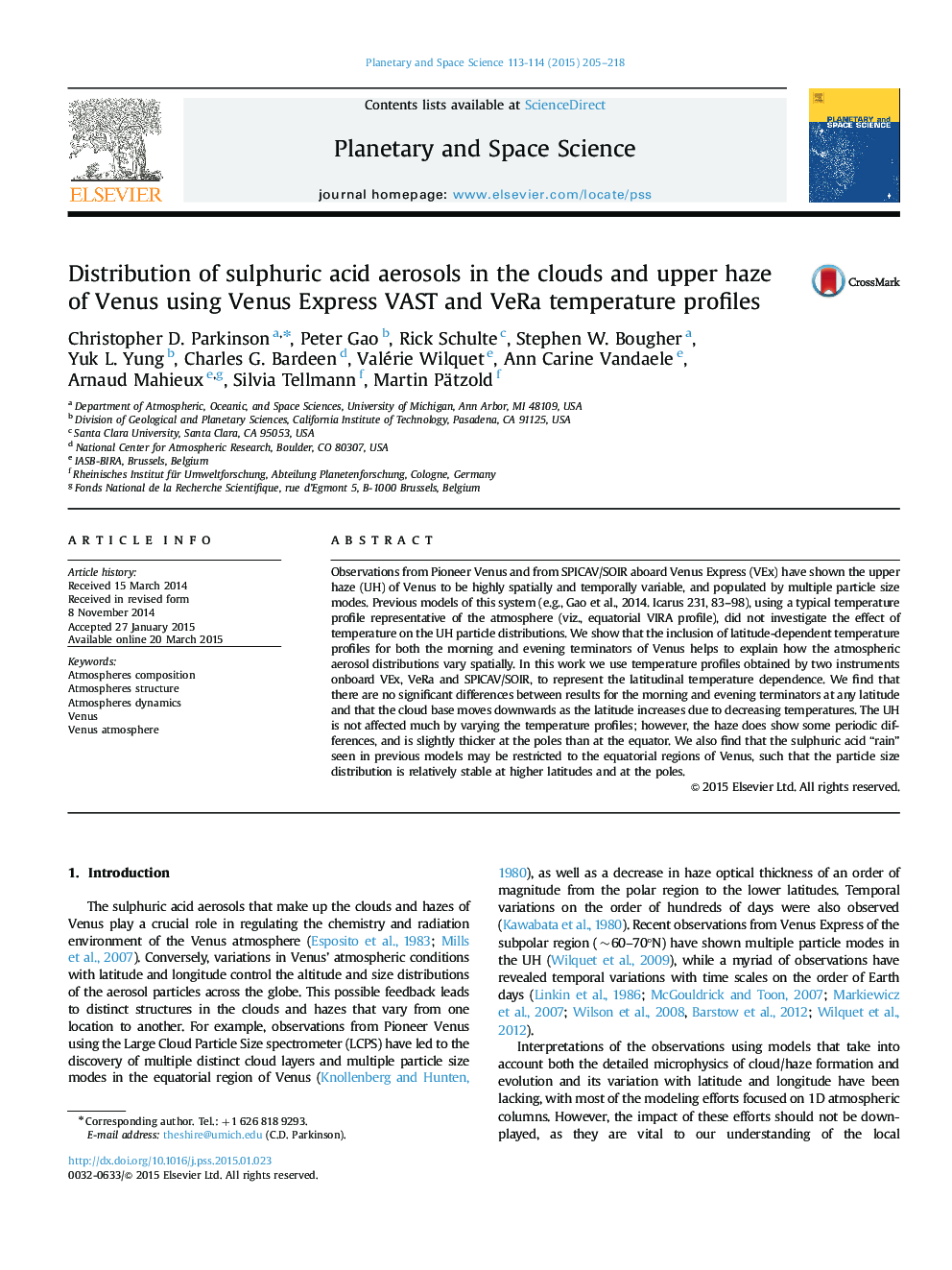| Article ID | Journal | Published Year | Pages | File Type |
|---|---|---|---|---|
| 8143235 | Planetary and Space Science | 2015 | 14 Pages |
Abstract
Observations from Pioneer Venus and from SPICAV/SOIR aboard Venus Express (VEx) have shown the upper haze (UH) of Venus to be highly spatially and temporally variable, and populated by multiple particle size modes. Previous models of this system (e.g., Gao et al., 2014. Icarus 231, 83-98), using a typical temperature profile representative of the atmosphere (viz., equatorial VIRA profile), did not investigate the effect of temperature on the UH particle distributions. We show that the inclusion of latitude-dependent temperature profiles for both the morning and evening terminators of Venus helps to explain how the atmospheric aerosol distributions vary spatially. In this work we use temperature profiles obtained by two instruments onboard VEx, VeRa and SPICAV/SOIR, to represent the latitudinal temperature dependence. We find that there are no significant differences between results for the morning and evening terminators at any latitude and that the cloud base moves downwards as the latitude increases due to decreasing temperatures. The UH is not affected much by varying the temperature profiles; however, the haze does show some periodic differences, and is slightly thicker at the poles than at the equator. We also find that the sulphuric acid “rain” seen in previous models may be restricted to the equatorial regions of Venus, such that the particle size distribution is relatively stable at higher latitudes and at the poles.
Related Topics
Physical Sciences and Engineering
Earth and Planetary Sciences
Geophysics
Authors
Christopher D. Parkinson, Peter Gao, Rick Schulte, Stephen W. Bougher, Yuk L. Yung, Charles G. Bardeen, Valérie Wilquet, Ann Carine Vandaele, Arnaud Mahieux, Silvia Tellmann, Martin Pätzold,
